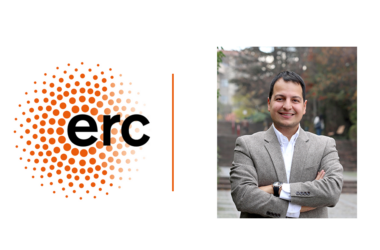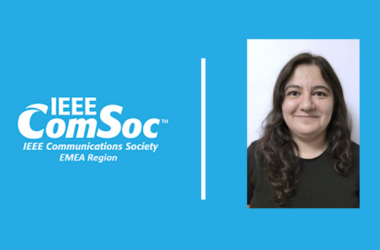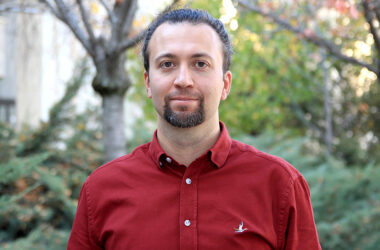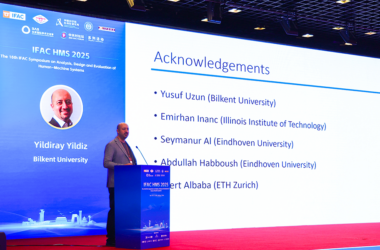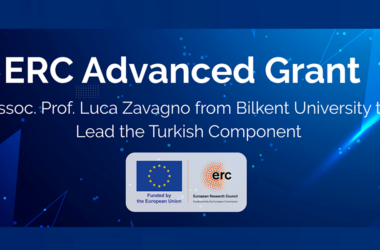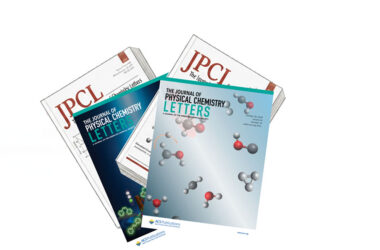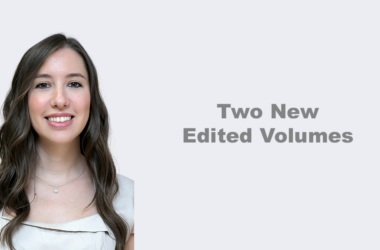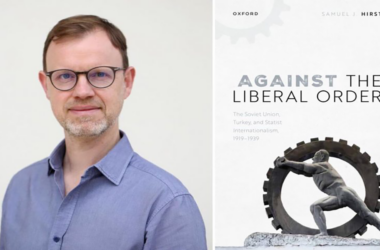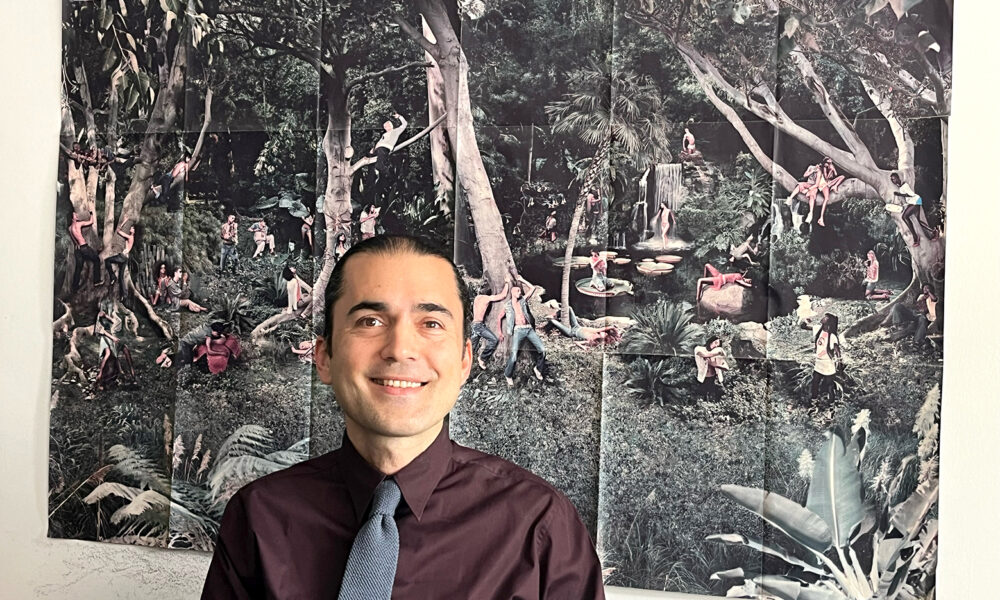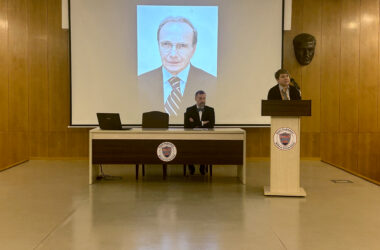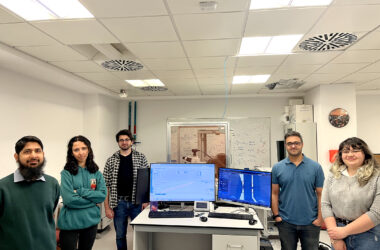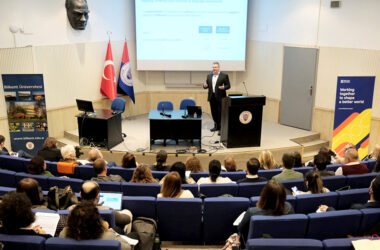Dr. Çağrı İmamoğlu is an architect and environment-behavior researcher. He earned his bachelor’s and master’s degrees from METU Department of Architecture, and in 2002 he completed his PhD degree at the University of Wisconsin-Milwaukee. Subsequently, he joined the Department of Interior Architecture and Environmental Design at Bilkent University. He attained the degree of associate professor from the Inter-University Council in 2011; however, he has been in the position of assistant professor for the past 18 years. His doctoral work focused on cognitive place schemata and the evaluation of different residential types for older adults and positioned assisted living as a favorable living alternative compared to homes and nursing homes. In general, his research seeks to enhance the functionality of physical settings for a more congruent relationship between those settings and the activities that take place in them. Together with his graduate students, he has been engaged in the assessment of diverse environments, such as dormitories, libraries and exhibition spaces, and has addressed wayfinding challenges in complex buildings, exploring such topics as environmental aesthetics, proxemics, place attachment and restorative environments by incorporating technologies like QR codes and eye-tracking. He is teaching IAED 524 (Construction of Design as a Social Practice) and FA 102 (Basic Design II) for the spring semester.
What’s one piece of information from your field that you think everyone should know?
Architecture is as wide a field as life itself, and no matter how capable an architect is, they still need a team to come up with a decent end product. Also, design is whole; the basic principles share similarities whether one is designing an urban space, a residence or a product.
When and where do you do your best thinking?
The time I could best focus used to be at night when everybody went to sleep. Now, my problem solving usually happens when I am not actively thinking on something; when I am sitting still, and sometimes early in the morning when I am still half asleep.
What do you like to do when you’re not working?
I am a squash enthusiast and have recently taken up running so I am also “working” on improving myself in those fields. I am a regular participant in the Bilkent squash tournaments and Republic and spring running events in addition to nationwide marathons and ultra-marathons. While the term “work” may often be associated with a negative connotation, it is any activity that keeps us busy and healthy. I try to look at any type of activity as a chance to improve myself, and I feel quite lucky to be in a position where I get to choose how I can do that.
If you weren’t an academic, what career would you choose?
I might consider being a squash instructor, photographer, carpenter or even a helicopter pilot, but more likely I might choose something related to humor because I find our existence, priorities and behaviors on this planet quite amusing, often comical.
Why did you choose an academic career?
I am not sure I chose it. Coming from a family of academics, I literally grew up in an academic environment. Later I found that I was not too fond of professional life in the construction business, and I felt more at home in the university. Regarding my field, architecture is such an all-encompassing area that it is challenging to find your path even after you “choose” your career. Where there is challenge, there is no room for boredom; thus, engaging in the investigative process and embracing continuous learning likely influenced my choice.
Which books have influenced you the most, and why?
“Animal Farm” was one of the first books I read in English. It is really interesting to see how it applies to our lives on so many levels: susceptibility to power and corruption seems absurd within such finite lives. It is disheartening to see that human progress mainly seems to appear on the surface, whereas our moral improvement seems to be minimal at best. Of course, this reflects on our immediate surroundings as well as on global issues. From a personal point of view, I was interested in environment-behavior research because of its two-fold aims: not only to contribute to science but also to improve people’s lives by directly improving their living environments and how they function within them. An example to this may be that our design suggestions based on our research involving library study spaces have been implemented at Bilkent Library. As architects, we need to expand our focus from buildings to places that live and satisfy their inhabitants. Architecture is nothing without people, like a university without qualified academics and students. Each of us attribute certain qualities to the places with which we interact: legibility, accessibility, control, privacy, stimulation, sociality, comfort, etc. Looking at architecture or the built environment not as physical objects but as living environments that provide opportunities for their residents could be a key starting point toward improvement.
What do you like the most about being at Bilkent?
The library and the clean toilets seemed important about 20 years ago. Now it is the atmosphere that brings together good students and dedicated academics. While I am not a big fan of the prevailing trend to treat students as customers with a hospitality mentality, if it improves the physical environment, why not enjoy some of its advantages?
In a way, Bilkent seems to reflect some of the characteristics of our country: we have some of the best academics and students; nevertheless, there is room for enhancement in fostering transparency, democratic decision making and institutionalization to cultivate a better educational and working environment.
What’s the secret to leading a happy life?
Simplifying one’s life may be a good start. In general, prioritizing authenticity, having genuine interpersonal relationships and engaging in work that aligns with one’s interests seem to be of key importance.
If you could go back to your undergraduate/graduate student years, what advice would you give to your younger-self?
Worry less. We seem to have very little control over what happens in the world, but we still need to remember that our actions do make a difference. Don’t hesitate to actively contribute to the greater good. Of course, even if it was possible, that advice going through to one’s younger self is not very likely, as Dr. John James Alexander aptly pointed out in a previous Faculty Q&A.
What’s your best work? What projects are you working on currently?
It is difficult to say because even though there are few academics in my research area, I was lucky to have collaborated with many skilled graduate students with whom we produced commendable work. However, I can give the example of my first work because it is a theme that I still build on: aesthetic evaluations of stimuli (such as building facades) with respect to complexity and familiarity. I find the relationship between complexity and liking quite intriguing: As human beings, we generally seem to have an initial preference for familiarity rather than complexity; however, we also seem to get bored with familiar stimuli and seek some novelty and complexity. In this regard, my findings from an experimental study indicated that traditional and modern house facades, representing intermediate levels of complexity were favored over the most and least complex ones. Furthermore, the preference for the intermediate level of complexity seemed to coincide with the highest level of complexity that the respondents were familiar with, supporting the view that people’s optimal range for liking may go up in accordance with their experiences. Hence, understanding the dynamics of optimal levels of complexity and familiarity appears to be an important design issue.
Currently we are working on publishing an empirical study with one of my PhD students exploring the relationship of the level of complexity and Gestalt principles on the evaluation of building facades. Some of our other works include investigating the role of complexity of displayed items in exhibit design; examining the role of other people in wayfinding; and exploring place schemata related to differing types of theater.
What excites you about your work? What’s the coolest thing about your work?
I think an interesting thing, if not the coolest thing, about my field is that many people initially have difficulty understanding what it is and why it is needed. The reason may be that we are so used to living in our environments that we take them for granted and may not even notice any issues with it unless something drastic happens. In fact, I have observed increased student interest when course material is directly related to their lives and living environments. By integrating research into architectural practice, our students gain practical experience and contribute to both research and design. Environment-behavior studies, also known as environmental psychology, is an interdisciplinary field that was founded due to the need for a systematic examination of individuals’ relationships with their physical environments. In this vein, my research activities (alone or with my graduate students or colleagues) have been along two general lines: first, obtaining assessments involving people’s usage and evaluations of different types of built environment, such as dormitories, libraries, homes, nursing homes and assisted living; second, conducting experimental studies to enhance our understanding of the dynamics of people-environment relationships. By means of both approaches, we hope to provide insight or guidelines for more functional and satisfactory physical environments.
What excites me about the field is its incredible potential, which is more and more recognized by our top students applying to our graduate program with a specific interest in exploring this topic. It is also encouraging to see that people from different fields seem to be interested in our work. For example, our latest paper with my PhD student Özlem Gezgin, which examined theatre settings through an environment-behavior perspective, became the most read article of 2023 in Studies in Theatre and Performance.
Could you share a turning point or defining moment in your career?
While I was a research assistant at METU, being awarded the Fulbright Scholarship to study in the US was quite influential. Prior to that I had contact with a limited number of academics in my field. The experience of conducting a PhD in a positive academic environment provided me with a wider perspective and multiple role models. For example, last year I was invited by my colleagues from the US to contribute to an edited book titled, Theorizing Built Form and Culture: The Legacy of Amos Rapoport, which was also published by Routledge this year. The book was prepared in honor of Prof. Rapoport, my mentor and PhD committee member.
Thus, I would advise our students to be exposed to diverse institutions and cultures to have the opportunity to explore alternative approaches and perspectives.
